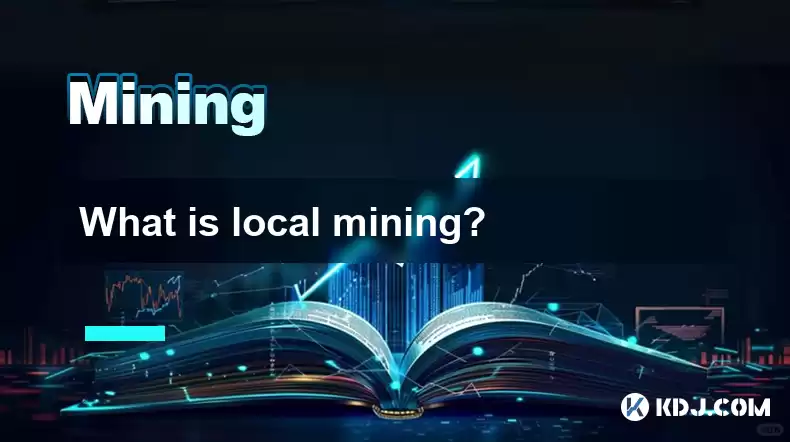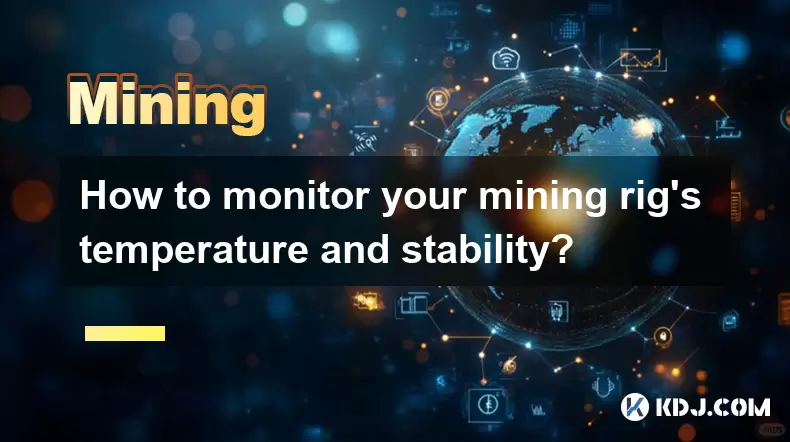-
 Bitcoin
Bitcoin $116400
-0.36% -
 Ethereum
Ethereum $4033
3.40% -
 XRP
XRP $3.302
-1.26% -
 Tether USDt
Tether USDt $1.000
-0.02% -
 BNB
BNB $796.1
1.67% -
 Solana
Solana $177.8
1.89% -
 USDC
USDC $0.9999
0.00% -
 Dogecoin
Dogecoin $0.2314
4.09% -
 TRON
TRON $0.3381
0.14% -
 Cardano
Cardano $0.7989
1.22% -
 Stellar
Stellar $0.4496
-1.84% -
 Chainlink
Chainlink $20.42
9.42% -
 Hyperliquid
Hyperliquid $41.17
0.88% -
 Sui
Sui $3.914
3.77% -
 Bitcoin Cash
Bitcoin Cash $584.7
1.52% -
 Hedera
Hedera $0.2632
-0.54% -
 Avalanche
Avalanche $24.09
3.40% -
 Ethena USDe
Ethena USDe $1.001
-0.02% -
 Litecoin
Litecoin $123.2
1.33% -
 Toncoin
Toncoin $3.318
-0.04% -
 UNUS SED LEO
UNUS SED LEO $8.984
-0.05% -
 Shiba Inu
Shiba Inu $0.00001323
2.85% -
 Uniswap
Uniswap $10.90
4.41% -
 Polkadot
Polkadot $3.999
3.34% -
 Dai
Dai $1.000
0.01% -
 Cronos
Cronos $0.1630
9.64% -
 Bitget Token
Bitget Token $4.484
0.82% -
 Monero
Monero $272.4
2.44% -
 Pepe
Pepe $0.00001173
6.03% -
 Aave
Aave $290.8
2.88%
What is local mining?
Local mining offers individuals control over their operations, reduces overhead, and allows them to participate in cryptocurrency mining on a smaller scale using personal devices.
Feb 22, 2025 at 10:48 am

Key Points:
- Local mining is a decentralized approach to cryptocurrency mining that involves individuals using their personal devices to contribute to blockchain networks.
- It allows individuals to participate in the mining process without the need for expensive equipment or electricity costs.
- Local mining offers several advantages, including reduced overhead, increased control over mining operations, and potential rewards.
Steps to Mine Cryptocurrency Locally:
1. Choose a Suitable Cryptocurrency:
- Select a cryptocurrency that is compatible with local mining, has a low difficulty level, and is profitable to mine.
- Common options for local mining include Monero (XMR), Ethereum Classic (ETC), and Ravencoin (RVN).
2. Set Up a Mining Software:
- Download and install mining software that is designed for local mining.
- Popular options include XMRig, Claymore's Dual Ethereum Miner, and T-Rex Miner.
- Configure the software with the mining pool address and your wallet information.
3. Join a Mining Pool:
- Joining a mining pool allows you to combine your resources with others and increase your chances of finding blocks.
- Research different mining pools and select one that is reliable, has low fees, and suitable for your needs.
4. Optimize Your Mining Hardware:
- Overclock your CPU or GPU to improve efficiency and increase the hashrate.
- Monitor temperatures to prevent overheating and extend the lifespan of your equipment.
- Utilize cooling solutions such as fans or liquid cooling systems to maintain optimal operating conditions.
5. Manage Power Consumption:
- Local mining can consume significant amounts of electricity.
- Track your power usage and adjust settings to minimize consumption while still maintaining a profitable hashrate.
- Consider using low-power CPUs or undervolting your GPU to reduce electricity costs.
6. Monitor Your Mining:
- Regularly monitor your mining progress to ensure profitability and identify any issues.
- Use mining monitoring dashboards or software to track your hashrate, earnings, and pool statistics.
- Adjust your settings or troubleshoot any problems as needed to maximize efficiency.
FAQs:
Q: Is it profitable to mine cryptocurrency locally?
A: The profitability of local mining varies depending on factors such as the chosen cryptocurrency, mining difficulty, electricity costs, and hardware efficiency. It is essential to calculate the potential earnings and compare them to the costs before investing in equipment or time.
Q: What are the risks associated with local mining?
A: Local mining involves certain risks, such as hardware failures, security breaches, and volatility in cryptocurrency prices. It is crucial to take appropriate precautions, such as ensuring proper ventilation, using reputable mining pools, and storing cryptocurrency securely.
Q: Can you mine Bitcoin locally?
A: Local mining Bitcoin is not practical as it requires highly specialized ASIC hardware with significant electricity consumption. Bitcoin mining is primarily conducted by large-scale mining operations with dedicated facilities and access to affordable electricity sources.
Disclaimer:info@kdj.com
The information provided is not trading advice. kdj.com does not assume any responsibility for any investments made based on the information provided in this article. Cryptocurrencies are highly volatile and it is highly recommended that you invest with caution after thorough research!
If you believe that the content used on this website infringes your copyright, please contact us immediately (info@kdj.com) and we will delete it promptly.
- Shiba Inu (SHIB) in the Crypto Landscape: Community, Trends, and Future Outlook
- 2025-08-09 20:30:12
- Lasers in Modern Warfare: Iron Beam and the Future of Defense
- 2025-08-09 20:30:12
- Maxi Doge Presale: The Meme Coin That's Pumping Iron and Prices!
- 2025-08-09 19:10:11
- Rare Coin Warning: Don't Get Fooled by That 1p Coin!
- 2025-08-09 18:50:12
- Cardano, Unilabs, and Tron Price: Decoding the Latest Crypto Buzz
- 2025-08-09 18:30:12
- Aerodrome Finance: Price Targets and the Bullish Channel - What's Next?
- 2025-08-09 18:50:12
Related knowledge

What is "proof-of-work" and how does it relate to mining?
Aug 07,2025 at 02:03pm
Understanding the Concept of Proof-of-WorkProof-of-work (PoW) is a consensus mechanism used in blockchain networks to validate transactions and secure...

What are the differences between mining on Windows vs. Linux?
Aug 06,2025 at 11:29pm
Overview of Cryptocurrency Mining PlatformsCryptocurrency mining involves using computational power to solve complex cryptographic puzzles and validat...

How to use an old computer for cryptocurrency mining?
Aug 07,2025 at 12:42pm
Understanding the Feasibility of Using an Old Computer for MiningUsing an old computer for cryptocurrency mining may seem outdated, but it is still te...

Can you mine cryptocurrency using solar power?
Aug 07,2025 at 12:00am
Understanding the Basics of Cryptocurrency MiningCryptocurrency mining involves validating transactions on a blockchain network by solving complex cry...

How to monitor your mining rig's temperature and stability?
Aug 09,2025 at 09:43am
Understanding the Importance of Temperature Monitoring in Mining RigsMaintaining optimal temperature levels in a mining rig is essential for long-term...

How to build a mining rig inside a PC case?
Aug 06,2025 at 11:01pm
Understanding the Basics of a Mining Rig in a PC CaseBuilding a mining rig inside a PC case involves transforming a standard computer chassis into a d...

What is "proof-of-work" and how does it relate to mining?
Aug 07,2025 at 02:03pm
Understanding the Concept of Proof-of-WorkProof-of-work (PoW) is a consensus mechanism used in blockchain networks to validate transactions and secure...

What are the differences between mining on Windows vs. Linux?
Aug 06,2025 at 11:29pm
Overview of Cryptocurrency Mining PlatformsCryptocurrency mining involves using computational power to solve complex cryptographic puzzles and validat...

How to use an old computer for cryptocurrency mining?
Aug 07,2025 at 12:42pm
Understanding the Feasibility of Using an Old Computer for MiningUsing an old computer for cryptocurrency mining may seem outdated, but it is still te...

Can you mine cryptocurrency using solar power?
Aug 07,2025 at 12:00am
Understanding the Basics of Cryptocurrency MiningCryptocurrency mining involves validating transactions on a blockchain network by solving complex cry...

How to monitor your mining rig's temperature and stability?
Aug 09,2025 at 09:43am
Understanding the Importance of Temperature Monitoring in Mining RigsMaintaining optimal temperature levels in a mining rig is essential for long-term...

How to build a mining rig inside a PC case?
Aug 06,2025 at 11:01pm
Understanding the Basics of a Mining Rig in a PC CaseBuilding a mining rig inside a PC case involves transforming a standard computer chassis into a d...
See all articles

























































































